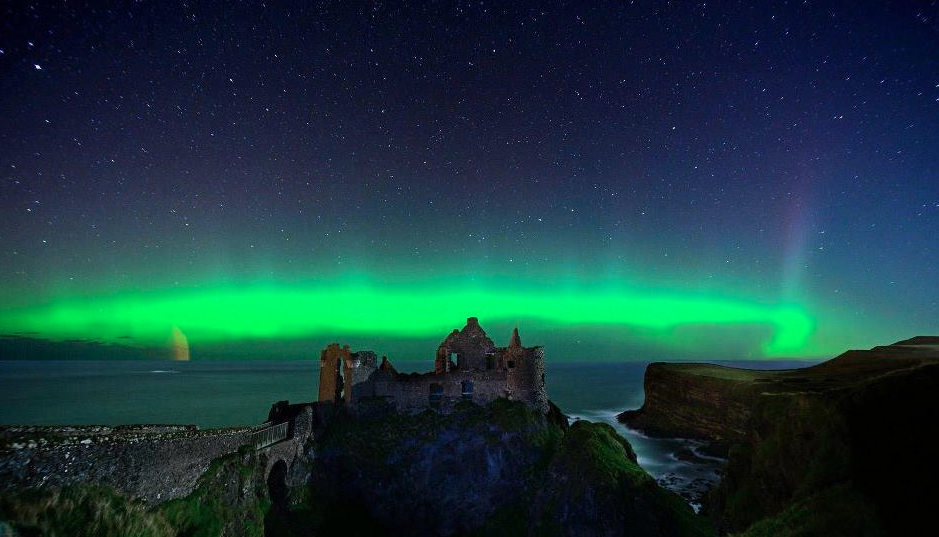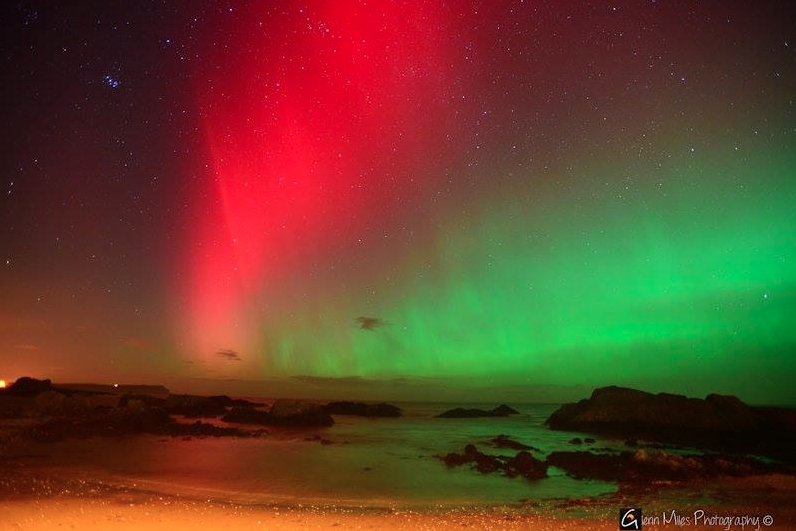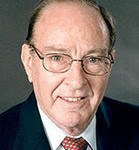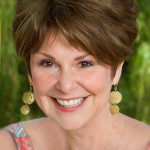Ed. Note: Shortly after founding the Institute of Noetic Sciences, Edgar Mitchell conceived and collaboratively developed what he described as “an authoritative encyclopedic volume of psychic research.” It was a groundbreaking book, and in honor of IONS’ upcoming fortieth anniversary, it was recently republished with a new foreword by IONS’ president Marilyn Schlitz and Senior Scientist Dean Radin. What in some ways is most striking about the book is Dr. Mitchell’s introduction, abridged here. His astute insights into the state of humanity’s affairs and his visionary and passionate call for how to take our species to the next level of its evolution are no less vital today than they were back then.
In February 1971, I had the privilege of walking on the moon as a member of the Apollo 14 lunar expedition. During the voyage I made a test in extrasensory perception (ESP), attempting to send information telepathically to four receivers on Earth. Since then, people have asked me why an astronaut would take such an intense interest in a subject as ridiculed and unacceptable in respectable scientific circles as psychic research.
It is a fair question. The answer is partly implied by the title of this book: psychic research presents a challenge that science can no longer avoid. But the title is also somewhat misleading. My real interest is – and has been for many years – to understand the nature of consciousness and the relationship of body to mind. Psychic research is one facet of this larger whole. Therefore, it might be said that I have simply gone from outer space to inner space.
The study of mind and consciousness is called noetics. The term comes from the Greek root word nous,meaning “mind.” As popularly used, noetic refers to purely intellectual apprehension. But Plato spoke of noetic knowledge as the highest form of knowing – a direct cognition or apprehension of the eternal truths that surpasses the normal discursive processes of logical, intellectual reasoning. The word science, of course, originally meant “knowing” but has come to mean a type of knowing derived from use of the objective, rational faculties of mind. But psychic abilities such as telepathy are another type of knowing – a subjective knowing, a nonrational, cognitive process largely overlooked by the scientific world. Consciousness appears to be the central, unifying concept behind these different aspects of mind.
The topic of consciousness is as vast as the cosmos and as close to us as sleep. Noetics is the discipline that is arising from this confluence of outer- and inner-space research. It is the ultimate frontier in man’s attempt to understand the nature of the universe and himself.
Inner vs. Outer: A Time for Reconciliation
If we review the history of mankind’s attempt to perceive, cognize, and interpret his environment, we find that in the last four centuries, as a result of the growth of scientific methodology, a formalized dichotomy has arisen between proponents of the two modes of knowing: objective observation (followed by deductive reasoning) and direct cognitive processes. These opposing modes of perception are crudely epitomized as science versus religion, reason versus intuition, rationality versus nonrationality, objective knowledge versus subjective experience, and so forth. Only in relatively recent years have scholars of each persuasion actively and vehemently denied the validity of the other process. In prescientific times, scholars – whether they agreed upon their conclusions or not – at least recognized the validity of both external and internal observation. (We must quickly add that the truly great teachers of modern times have always acknowledged this dual process.)
Thus, although I am identifying consciousness as the ultimate frontier in man’s attempt to gain knowledge, it is by no means a new frontier because throughout history people have sought to resolve the differences between their objective methods and their subjective experience – between outer and inner. The study of mind and consciousness is the common ground for this effort. The living system that we call man is a holistic phenomenon that exhibits both modes of knowing.
Perhaps after 350 years of divisiveness between science and religion we are on the threshold of a new era of knowledge and cooperation. It should be obvious that objective observation and reason do not by themselves produce a satisfactory ethic for living – neither for the individual nor for social systems. Facts become divorced from values, and action from need.
On the other hand, intuition and inspiration do not by themselves produce the agreement society needs to bring about order, structure, and survival in the material world. In this case, observation frequently becomes subject to individual interpretation according to the covert biases of the individual.
The antagonism between the objective and subjective modes of knowledge can be clearly illustrated. In 1600 Giordano Bruno was burned at the stake by theologians for asserting that the earth was not the center of the solar system and that there were other solar systems with living beings in them. In 1972 the American Academy of Science asserted that science and religion are “mutually exclusive realms of thought” and therefore the Genesis theory of creation should be kept out of science textbooks. The roles of science and religion are reversed in the modern example, but the same close-minded dogmatism is operating to limit inquiry through sanctimonious denial of other viewpoints.
Research over the last fifty years by little-known but forward-looking thinkers has shown there is a vast creative potential in the human mind that is as yet almost totally unrecognized by science. Nonrational cognitive processes have so far eluded scientific description. However, this potential has been previously known and described by a few ancient sages and enlightened religious teachers, using veiled prescientific language to express what they discovered through subjective, intuitive, experiential means. We are, in my opinion, on the threshold of rediscovering and redefining those concepts and insights through the objective, rational, experimental efforts of science – if dogmatism and outmoded belief structures do not prevent it. The proper direction of sophisticated instrumentation and laboratory techniques can be the means whereby the physical and metaphysical realms are shown to be different aspects of the same reality. If this is demonstrated, it would be ironic, but appropriate, that so-called godless technology and materialistic science should lead to the rediscovery of the essential unity of science and religion.
Noetics recognizes all this. Noetics is the research frontier where the convergence of objectivity and subjectivity, of reason and intuition, is occurring most rapidly. In the study of consciousness, the techniques and technology of science are being combined with the higher insights of mind from both East and West to provide a new methodology for scholarly inquiry. For it is quite clear that reason alone is not sufficient for total understanding of ourselves. As Michael Polanyi, the eminent philosopher of science, points out in his book Personal Knowledge (Routledge and Kegan Paul, 1958), scientific discoveries do not always follow in a sequence of perfectly logical deductions. Instead, many discoveries involve intuitions and hunches on the part of the scientist in a manner that cannot be completely explained.
The Limits of Pragmatism
When I went to the moon, I was as pragmatic a test pilot, engineer, and scientist as any of my colleagues. More than a quarter of a century had been spent in learning the empirical approach to dealing with the universe. Many times my life has depended upon the validity of scientific principles and the reliability of the technology built upon those principles. I knew well that analytic and logical thought, using objective data, could produce a technology that would reveal new secrets of the universe by probing the reaches of space and, at the microscopic level, the structure of atoms. Prior to the lunar exploration, I became as familiar with the spacecraft and its vast support system of people and equipment as a man could be, with confidence in it all. Despite that familiarity and confidence, though, there were moments during the flight when I felt an amazed and profound respect for the rational abilities of the human intellect – that it could find ways to guide a tiny capsule of metal through a half million miles of space with such precision and accuracy. Yes, I was pragmatic because my experience had shown beyond all question that science works.
But there was another aspect to my experience during Apollo 14, and it contradicted the “pragmatic engineer” attitude. It began with the breathtaking experience of seeing planet Earth floating in the vastness of space.
The first thing that came to mind as I looked at Earth was its incredible beauty. Even the spectacular photographs do not do it justice. It was a majestic sight, a splendid blue and white jewel suspended against a velvet black sky. How peacefully, how harmoniously, how marvelously it seemed to fit into the evolutionary pattern by which the universe is maintained. In a peak experience, the presence of divinity became almost palpable, and I knew that life in the universe was not just an accident based on random processes. This knowledge came to me directly – noetically. It was not a matter of discursive reasoning or logical abstraction. It was an experiential cognition. It was knowledge gained through private subjective awareness, but it was – and still is – every bit as real as the objective data upon which, say, the navigational program or the communications system was based. Clearly, the universe had meaning and direction. It was not perceptible by the sensory organs, but it was there nevertheless – an unseen dimension behind the visible creation that gives it an intelligent design and that gives life purpose.
Next I thought of our planet’s life-supporting character. That little globe of water, clouds, and land no bigger than my thumb was home, the haven our spacecraft would seek at the end of our voyage. Buckminster Fuller’s description of the planet as “Spaceship Earth” seemed eminently fitting.
Then my thoughts turned to daily life on the planet. With that, my sense of wonderment gradually turned into something close to anguish because I realized that at the very moment when I was so privileged to view the planet from 240,000 miles in space, people of Earth were fighting wars; committing murder and other crimes; lying, cheating, and struggling for power and status; abusing the environment by polluting the water and air; wasting natural resources and ravaging the land; acting out of lust and greed; and hurting others through intolerance, bigotry, prejudice, and all the things that add up to man’s inhumanity to man. It seemed as though man were totally unconscious of his individual role in – and individual responsibility for – the future of life on the planet.
It was also painfully apparent that the millions of people suffering in conditions of poverty, ill health, misery, fear, and near slavery were in that condition from economic exploitation, political domination, religious and ethnic persecution, and a hundred other demons that spring from the human ego. Science, for all its technological feats, had not – more likely could not – deal with these problems stemming from man’s self-centeredness.
The magnitude of the overall problem seemed staggering. Our condition seemed to be one of deepening crises on an unprecedented scale, crises that were mounting faster than we could solve them. There appeared to be the immediate possibility that warfare might destroy vast segments of civilization with one searing burst of atomic fury. Only a little further off appeared the possibility of intolerable levels of polluted air and of undrinkable water. A more remote but no less real likelihood was the death of large portions of the population from starvation, abetted by improper resources management by an exploding population.
How had the world come to such a critical situation – and why? Even more important, what could be done to correct it? How could we restore the necessary harmonious relationship between the environment and ourselves? How could a nuclear Armageddon be avoided? How could life be made livable? How could our potential for a peaceful, creative, fulfilling society be realized? How could the highest development of our objective rationality, epitomized by science, be wedded to the highest development of our subjective intuition, epitomized by religion?
These thoughts and questions stayed with me through the mission, splashdown, and parades. They stayed long afterward to the point of haunting me with an overwhelming awareness of how limited a view man has of his own life and the planet’s. Sometimes at night I would lie awake for hours struggling with this enigma, trying to understand it and see it in a sensible perspective. How could human beings, the most intelligent creature on earth, be so utterly stupid and shortsighted as to put themselves in a position of possible global extinction? How had insight become divorced from instinct? Was it possible to find a workable solution?
The View from Above, and from Within
Only when man sees his fundamental unity with the processes of nature and the functioning of the universe – as I so vividly saw it from the Apollo spacecraft – will the old ways of thinking and behaving disappear. Only when man moves from his ego-centered self-image to a new image of universal human will the perennial problems that plague us be susceptible of resolution. Humanity must rise from man to mankind, from the personal to the transpersonal, from self-consciousness to cosmic consciousness. Humanity’s multiple problems resolve themselves into one fundamental problem: how to change consciousness. How can we raise our awareness to a higher level – a level that will restore the unity of human, the planet, and the universe?
For me, seeing our planet from space was an event with some of the qualities traditionally ascribed to religious experience. It triggered a deep insight into the nature of existence – the sort of insight that radically changes the inner person. My thinking – indeed, my consciousness – was altered profoundly. I came to feel a moral responsibility to pass on the transformative experience of seeing Earth from the larger perspective. But further, the rational part in me had to recognize the validity ofthe nonrational cognitive process.
Obviously we cannot send everyone to the moon in the near future. But we can provide information and experiences of another sort that will serve the same purpose and provide the same perspective. Moreover, we can do it in a way that brings objective reason closer to subjective intuition and thereby help to lessen the unfortunate gulf between these two modes of knowing. We can do this because inner- and outer-space research are converging.
Now is the time for us to begin building a single whole of humanity. Now is the time to develop our nonrational abilities into a “subjective technology,” which will begin the wedding of science and religion, reason and intuition, the physical and the spiritual. This union of head and heart, insight and instinct, will ensure that as science comes to comprehend the nonmaterial aspect of reality as well as it knows the material – that is, as science approaches omniscience – our knowledge will become wisdom, our love of power will become the power of love, and the universal human of cosmic consciousness can then emerge.
This material was reproduced with permission by Cosimo Books, an imprint of Cosimo, Inc., from Psychic Exploration: A Challenge for Science by Dr. Edgar D. Mitchell (9781616405472), ©1974 by Edgar D. Mitchell & Associates. Cosimo books are available at online retailers and cosimobooks.com
http://noetic.org/noetic/issue-eleven-june/psychic-exploration/


 Traveling back to Earth, having just walked on the moon, Apollo 14 astronaut Edgar Mitchell had an experience for which nothing in his life had prepared him. As he approached the planet we know as home, he was filled with an inner conviction as certain as any mathematical equation he’d ever solved. He knew that the beautiful blue world to which he was returning is part of a living system, harmonious and whole—and that we all participate, as he expressed it later, “in a universe of consciousness.”
Traveling back to Earth, having just walked on the moon, Apollo 14 astronaut Edgar Mitchell had an experience for which nothing in his life had prepared him. As he approached the planet we know as home, he was filled with an inner conviction as certain as any mathematical equation he’d ever solved. He knew that the beautiful blue world to which he was returning is part of a living system, harmonious and whole—and that we all participate, as he expressed it later, “in a universe of consciousness.” Phyllis F. Mitz, M.A. has enjoyed a flourishing astrology practice for over 20 years. Using her unique blend of astrology, psychology (in which she holds her Master’s Degree) and spirituality, (in which she is pursuing a Doctorate Degree) Mitz has counseled thousands of people from all walks of life, including celebrities, politicians, and corporate executives, on the best ways and times to find success in life, love and work.
Phyllis F. Mitz, M.A. has enjoyed a flourishing astrology practice for over 20 years. Using her unique blend of astrology, psychology (in which she holds her Master’s Degree) and spirituality, (in which she is pursuing a Doctorate Degree) Mitz has counseled thousands of people from all walks of life, including celebrities, politicians, and corporate executives, on the best ways and times to find success in life, love and work. As one of the world’s most gifted intuitive teachers, Peggy Rometo shares her wisdom with Fortune 500 leaders, CEOs, entrepreneurs and celebrities as well as housewives, firemen, and schoolteachers. Deepak Chopra, Donna Karan and Demi Moore are just a few of the notable figures who praise her work. Her tenacity and absolute confidence in what she teaches, combined with humor and grace, has attracted individuals from all walks of life. Her practical style and genuine care are the perfect assets in guiding others to access and manifest spiritual guidance. Rometo’s approach appeals to entrepreneurs, trendsetters and go-getters, as she helps to take the guesswork out of increasing the value of our lives. <br><br> Author of The Little Book of Big Promises and the soon-to-be-published Genius Intuition, Rometo offers “how-to” guides for tapping into our innate wisdom founded on her belief that all the answers we seek come from within. She has appeared on FOX News’ Strategy Room and We tv, and has been featured at Hay House “I Can Do It” events, Donna Karan’s NYC-based Urban Zen Studio, the Omega Institute, and the Zurich-based Lebenskraft Festival. <br><br> Highly intuitive from a young age, Peggy Rometo spent much of her life resisting her gifts, and became a successful entrepreneur and realestate investor and raised three children together with her husband Bob. At age 38, she lost a brother in an unexpected accident, prompting her to reevaluate her life’s purpose. She instantly connected to a wellspring of inner guidance, which she has honed to understand intuitive ability in herself and others.
As one of the world’s most gifted intuitive teachers, Peggy Rometo shares her wisdom with Fortune 500 leaders, CEOs, entrepreneurs and celebrities as well as housewives, firemen, and schoolteachers. Deepak Chopra, Donna Karan and Demi Moore are just a few of the notable figures who praise her work. Her tenacity and absolute confidence in what she teaches, combined with humor and grace, has attracted individuals from all walks of life. Her practical style and genuine care are the perfect assets in guiding others to access and manifest spiritual guidance. Rometo’s approach appeals to entrepreneurs, trendsetters and go-getters, as she helps to take the guesswork out of increasing the value of our lives. <br><br> Author of The Little Book of Big Promises and the soon-to-be-published Genius Intuition, Rometo offers “how-to” guides for tapping into our innate wisdom founded on her belief that all the answers we seek come from within. She has appeared on FOX News’ Strategy Room and We tv, and has been featured at Hay House “I Can Do It” events, Donna Karan’s NYC-based Urban Zen Studio, the Omega Institute, and the Zurich-based Lebenskraft Festival. <br><br> Highly intuitive from a young age, Peggy Rometo spent much of her life resisting her gifts, and became a successful entrepreneur and realestate investor and raised three children together with her husband Bob. At age 38, she lost a brother in an unexpected accident, prompting her to reevaluate her life’s purpose. She instantly connected to a wellspring of inner guidance, which she has honed to understand intuitive ability in herself and others.